1290cc DOHC Inline 4-Cylinder Engine Dual Weber 40DCOE Carburetors 95bhp (est) 4-Speed Manual Transmission Independent Front and Live Rear Axle Suspension 4-Wheel Hydraulic Drum Brakes *One of only 18 SVZ produced and the only one originally fitted with a Double Bubble roof *Extensive period race history including the 1960 Targa Florio *Complete with both its FIA Passport and FIVA Identity Card *Eligible for the world's most sought after events including the Mille Miglia and Colorado Grand Previewing in Greenville, South Carolina by appointment. Please contact motors.us@bonhams.com for scheduling. THE GIULIETTA SPRINT VELOCE Alfa Romeo returned to automobile manufacture fairly quickly after World War II, but it was not until 1950 that a new design became available. This was the 1900, a unit body sedan with a twin overhead cam 1,884cc four-cylinder engine. It was the first Alfa built on a real production line – all previous cars had been largely hand-built –and also the first with left-hand drive. Until 1950, Alfa production had hovered around 400 units annually. With the 1900, this increased almost tenfold. A 1900C Sprint coupe was introduced with body by Carrozzeria Touring and a Spyder cabriolet by Pininfarina, both built in much smaller quantities. In 1954 came Alfa's second new postwar design, the Giulietta. Powered by a DOHC four of 1,290cc, it came as a unibody 2+2 coupe by Bertone, called "Sprint," and was capable of 102mph in basic form. The more powerful Sprint Veloce, introduced in 1956, would do 110. Its basic design was the work of Orazio Satta, with Alfa since 1938, who was also responsible for the 1900. In the Spring of 1955, a sedan version (Berlina) became available, and soon afterwards a Spider convertible by Pininfarina. The Berlina was most popular, particularly in Italy, with nearly 193,000 built in eleven years. Joining the standard models in 1957 were two limited-production models, the Sprint Speciale, a long-tail coupe by Bertone, and the Sprint Zagato, a short-tail version by that Milanese coachbuilder. Carrozzeria Zagato was formed in 1920 by Ugo Zagato, who had learned his craft as an apprentice in Cologne and worked for Corrozzeria Varesina in Italy. Borrowing money to purchase tools, he opened his own shop in Milan in 1920, building first on Fiat 501 chassis. Zagato subsequently built bodies on Fiat, Bianchi, Diatto and Itala chassis, while also making aircraft parts to supplement the business. A master of aluminum, he excelled at lightweight sports bodies, and clothed the classic Alfa Romeo 6C roadsters in the late 1920s and early '30s. When war came to Europe, Zagato built truck cabs for Isotta Fraschini until his plant was bombed in 1943. With a new factory in 1946 and the help of his eldest son, Elio, Zagato began building coupe and spider bodies for Fiat. By the mid-1950s, work for Alfa Romeo resumed, and included a 1900 SS, and the Giulietta Sprint Zagato coupes, which followed from a rebuild effort on the Giulietta Sprint Veloce that Carlo Leto di Priolo crashed during the 1956 Mille Miglia. THE MOTORCAR OFFERED Between 16 and 18 Giulietta Sprint Veloce Coupes (SVZ) were rebodied by Zagato before a factory effort was commenced to send Sprints straight to Zagato (SZ). The ultra-lightweight aluminum body shed a significant amount of weight from the original steel-bodied Bertone designed cars and proved to be very effective on the track. This Sprint Veloce Coupe was built in Portello on May 20, 1957 and purchased new by Sergio Cannara from Busseto-Parma on May 20, 1957 and registered with the Italian registration number "PR 36055". Cannara, an nearly six-and-a-half-foot tall gentleman racer, participated in the July 6, 1957 Castel d'Acque – Vernasca event with the original Bertone coachwork before sending the car to Zagato in late 1957. Completed in 1958, the reskinned Alfa featured a Zagato's iconic 'Double Bubble' roof to accommodate Mr. Cannara's height—the only Sprint Veloce Zagato to be so
1290cc DOHC Inline 4-Cylinder Engine Dual Weber 40DCOE Carburetors 95bhp (est) 4-Speed Manual Transmission Independent Front and Live Rear Axle Suspension 4-Wheel Hydraulic Drum Brakes *One of only 18 SVZ produced and the only one originally fitted with a Double Bubble roof *Extensive period race history including the 1960 Targa Florio *Complete with both its FIA Passport and FIVA Identity Card *Eligible for the world's most sought after events including the Mille Miglia and Colorado Grand Previewing in Greenville, South Carolina by appointment. Please contact motors.us@bonhams.com for scheduling. THE GIULIETTA SPRINT VELOCE Alfa Romeo returned to automobile manufacture fairly quickly after World War II, but it was not until 1950 that a new design became available. This was the 1900, a unit body sedan with a twin overhead cam 1,884cc four-cylinder engine. It was the first Alfa built on a real production line – all previous cars had been largely hand-built –and also the first with left-hand drive. Until 1950, Alfa production had hovered around 400 units annually. With the 1900, this increased almost tenfold. A 1900C Sprint coupe was introduced with body by Carrozzeria Touring and a Spyder cabriolet by Pininfarina, both built in much smaller quantities. In 1954 came Alfa's second new postwar design, the Giulietta. Powered by a DOHC four of 1,290cc, it came as a unibody 2+2 coupe by Bertone, called "Sprint," and was capable of 102mph in basic form. The more powerful Sprint Veloce, introduced in 1956, would do 110. Its basic design was the work of Orazio Satta, with Alfa since 1938, who was also responsible for the 1900. In the Spring of 1955, a sedan version (Berlina) became available, and soon afterwards a Spider convertible by Pininfarina. The Berlina was most popular, particularly in Italy, with nearly 193,000 built in eleven years. Joining the standard models in 1957 were two limited-production models, the Sprint Speciale, a long-tail coupe by Bertone, and the Sprint Zagato, a short-tail version by that Milanese coachbuilder. Carrozzeria Zagato was formed in 1920 by Ugo Zagato, who had learned his craft as an apprentice in Cologne and worked for Corrozzeria Varesina in Italy. Borrowing money to purchase tools, he opened his own shop in Milan in 1920, building first on Fiat 501 chassis. Zagato subsequently built bodies on Fiat, Bianchi, Diatto and Itala chassis, while also making aircraft parts to supplement the business. A master of aluminum, he excelled at lightweight sports bodies, and clothed the classic Alfa Romeo 6C roadsters in the late 1920s and early '30s. When war came to Europe, Zagato built truck cabs for Isotta Fraschini until his plant was bombed in 1943. With a new factory in 1946 and the help of his eldest son, Elio, Zagato began building coupe and spider bodies for Fiat. By the mid-1950s, work for Alfa Romeo resumed, and included a 1900 SS, and the Giulietta Sprint Zagato coupes, which followed from a rebuild effort on the Giulietta Sprint Veloce that Carlo Leto di Priolo crashed during the 1956 Mille Miglia. THE MOTORCAR OFFERED Between 16 and 18 Giulietta Sprint Veloce Coupes (SVZ) were rebodied by Zagato before a factory effort was commenced to send Sprints straight to Zagato (SZ). The ultra-lightweight aluminum body shed a significant amount of weight from the original steel-bodied Bertone designed cars and proved to be very effective on the track. This Sprint Veloce Coupe was built in Portello on May 20, 1957 and purchased new by Sergio Cannara from Busseto-Parma on May 20, 1957 and registered with the Italian registration number "PR 36055". Cannara, an nearly six-and-a-half-foot tall gentleman racer, participated in the July 6, 1957 Castel d'Acque – Vernasca event with the original Bertone coachwork before sending the car to Zagato in late 1957. Completed in 1958, the reskinned Alfa featured a Zagato's iconic 'Double Bubble' roof to accommodate Mr. Cannara's height—the only Sprint Veloce Zagato to be so





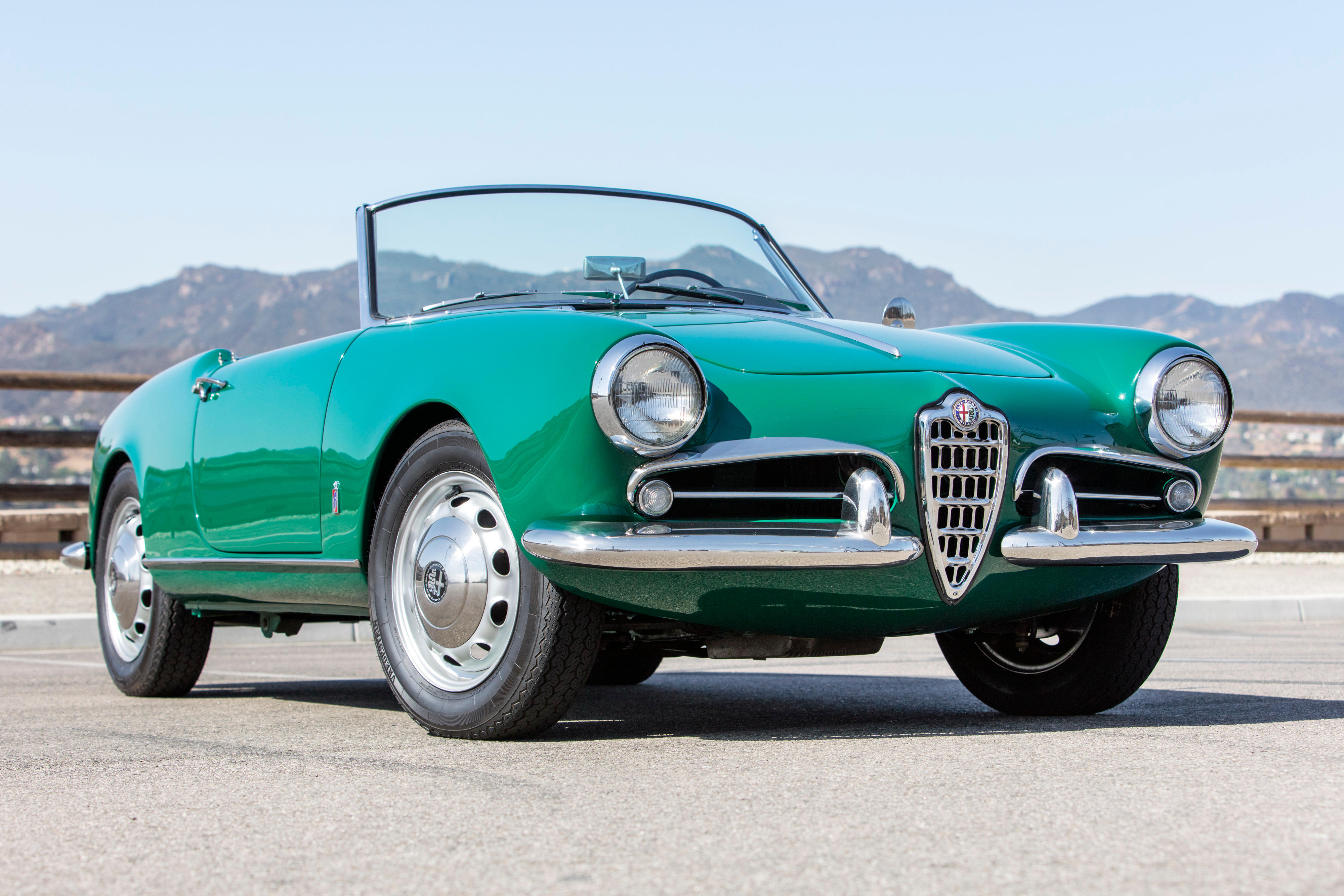

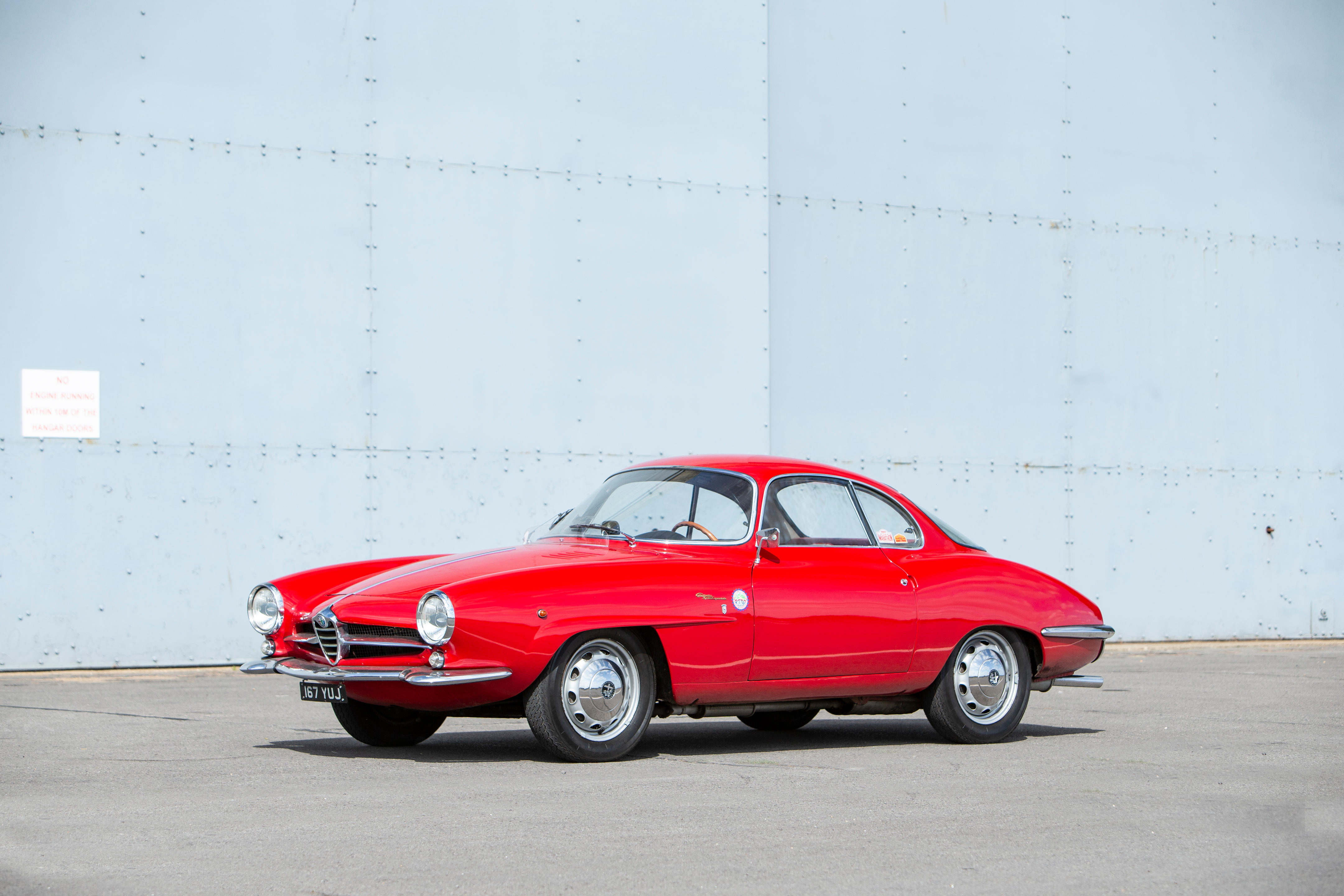
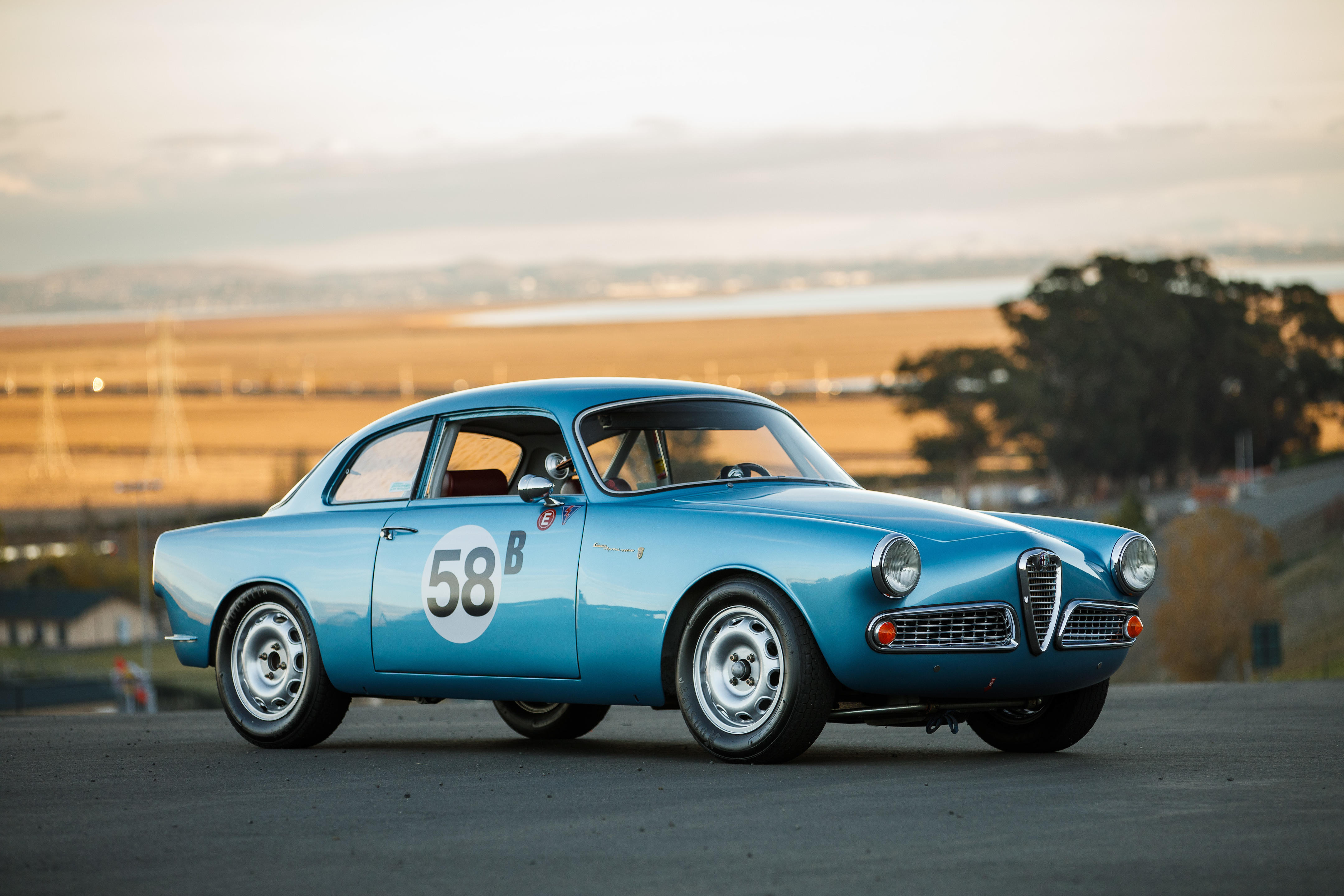
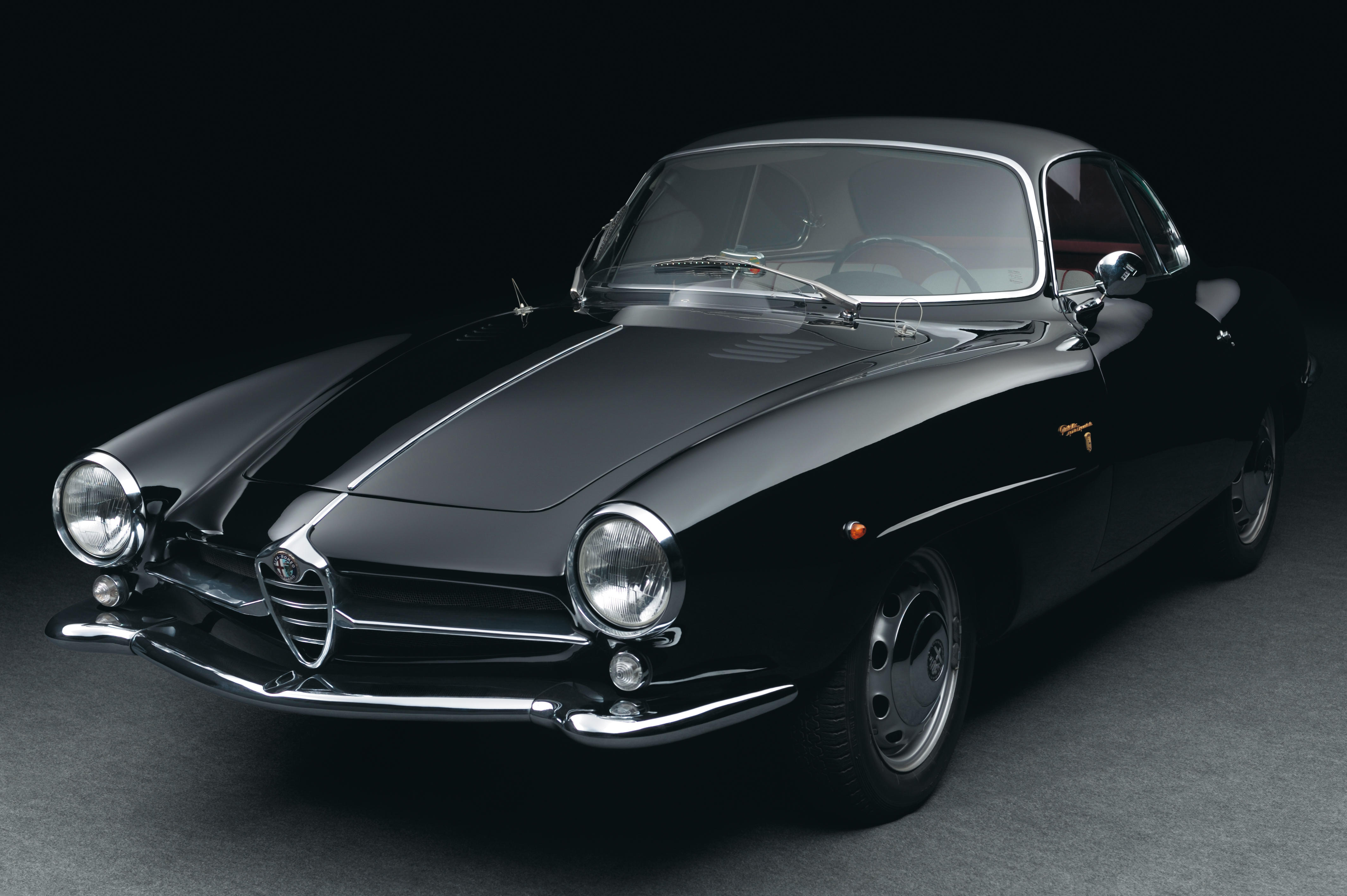



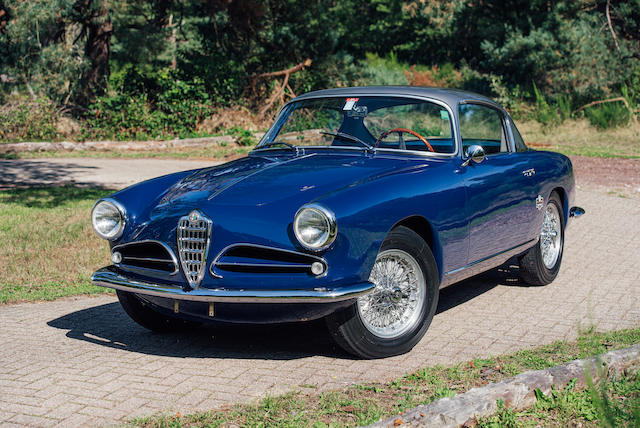

Try LotSearch and its premium features for 7 days - without any costs!
Be notified automatically about new items in upcoming auctions.
Create an alert